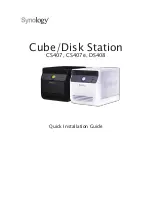
EPSON AcuLaser C8500
Revision C
Operating Principles
2-29
2.5.5 Xerographics I
ROS ASSY
The ROS ASSY (Raster Output Scanner Assembly) is the exposure unit that
outputs laser radiation to form an electrostatic latent image on the drum
surface. Items concerning the ROS ASSY are simply referred to as “ROS” in
this manual.
The ROS ASSY consists of the following parts:
Figure 2-37. Xerographics I
Image data is input to the ROS ASSY as an electric signal (expresses
image data according to voltage level). The LD ASSY (Laser Diode
Assembly) converts the image data from electric signals to light signals
(expresses data by flashing the laser beam on and off).
The proper electrostatic latent image cannot be obtained if the amount of
laser radiation fluctuates, so the LD Assy constantly monitors LD output
(LD Power) by monitor circuit, and controls power to keep a stable quantity
of light. This control is referred to as “APC (Automatic Power Control).” (For
details, see 2.7.5.3 "Quantity of Light Control" in this chapter.)
The Scanner Assy consists of a Scanner Motor that turns at half speed and
polygon mirrors mounted on the Scanner Motor shaft.
Laser radiation output from the LD Assy strikes the polygon mirror.
The polygon mirror has 12 reflecting mirror sides, and reflecting angle of
the laser light changes by rotation of the Scanner Motor. The drum surface
is scanned lengthwise by laser radiation by changing the reflecting angle.
Each reflecting mirror surface scans 1 line.
Laser radiation reflected by the polygon mirror reaches the drum surface
by way of the lens, mirror and window. The lens corrects aberration, the
mirror secures a light path, and the window prevents foreign matter from
getting inside the ROS.
Image data writing timing must coincide with the beginning of laser
scanning in order to properly form an electrostatic latent image on the
drum surface.
When laser light is received by the SOS Sensor on the SOS PWB (Start of
Scan Printed Wiring Board), it is converted into an electric signal (SOS
signal) for detecting the initial position (start of scan reference point) for
scanning the various lines.
LD Assy
Scanner Assy
SOS PWB
Lens
Mirror
Window
Summary of Contents for AcuLaser C8500
Page 12: ......
Page 21: ...C H A P T E R 1 PRODUCTDESCRIPTIONS ...
Page 78: ...C H A P T E R 2 OPERATINGPRINCIPLES ...
Page 108: ...EPSON AcuLaser C8500 Revision C Operating Principles 2 31 Figure 2 38 Xerographics II ...
Page 110: ...EPSON AcuLaser C8500 Revision C Operating Principles 2 33 Figure 2 39 Development ...
Page 118: ...EPSON AcuLaser C8500 Revision C Operating Principles 2 41 Figure 2 45 Drive ...
Page 120: ...EPSON AcuLaser C8500 Revision C Operating Principles 2 43 Figure 2 46 Electrical ...
Page 153: ...C H A P T E R 3 DISASSEMBLY ASSEMBLY ADJUSTMENT ...
Page 269: ...C H A P T E R 4 DIAGNOSTICS ...
Page 353: ...C H A P T E R 5 TROUBLESHOOTING ...
Page 480: ...C H A P T E R 6 MAINTENANCE ...
Page 503: ...C H A P T E R 7 APPENDIX ...
Page 564: ......
Page 565: ......
Page 566: ......
Page 567: ......
Page 568: ......
Page 569: ......
Page 570: ......
















































